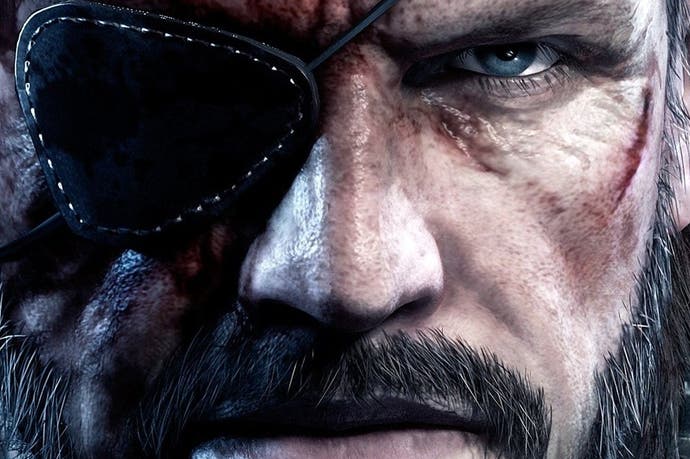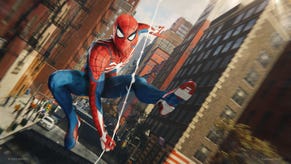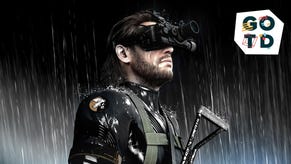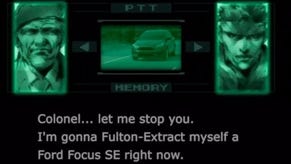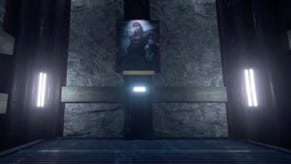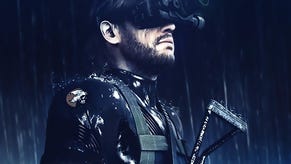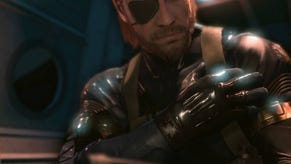Face-Off: Metal Gear Solid 5: Ground Zeroes
A quad-format comparison of the Fox Engine in action.
Transparent as ever, Hideo Kojima's misgivings with Metal Gear Solid 4 proved largely technical in nature, with the scale of its levels and animation blending apparently falling short of his ambitions. Almost six years on, and we have an open-world slice of Metal Gear Solid 5 that seeks to address this - ambitiously hitting not one, but four platforms at once. Helpfully, the 60fps advantage on PS4 and Xbox One has been revealed far in advance by the studio, while Kojima himself declares the PS4 version as being closest to the photo-realistic bar his team is aiming for, thanks to its full 1080p presentation. But is resolution the only benefit in buying Ground Zeroes on Sony's latest platform - and what of the older console releases?
One of the perks of the PS4 version, as revealed earlier via a tweet, is atmospheric simulation - a real-time approach to rendering skies in the Ground Zeroes mission. This allows clouds to move dynamically and impact the sun's lighting, where by contrast the Xbox One release joins PS3 and 360 with purely static skyboxes. It's a difference that only becomes apparent during side-ops missions, where the military base is accessible in broad daylight. Though curiously, the skybox is reinstated during certain set-pieces on PS4 - making this a subtle advantage if you know when and where to look.
The resolution details stand as the most dramatic difference though, with Konami happily making public the specifics of each version ahead of release. From our pixel counts, we can confirm that the PS4 does indeed push out a 1920x1080 framebuffer as promised, while on Xbox One we have just a 1280x720 window with which to work. For a game that embarks on a crusade for open-world stealth action, the lower resolution on Microsoft's platform does affect visibility when lining up long-range shots - just as it does across Battlefield 4's sandbox areas.
A pass of FXAA post-processing is dolloped across both versions too, which sadly negates some of the clarity we were expecting from the PS4 version, though the final image remains respectable. Meanwhile, in the Xbox One's case there's no stopping the pixel crawl artefacts resulting from its lower pixel throughput, and the drop in image quality here remains tangible.
One point that remains a mystery, however, is the internal resolutions on PS3 and Xbox 360. Both are listed as 720p on Konami's product page, albeit with a form of scaling also mentioned. In practise, we're looking at a 992x720 resolve on PS3 and 360 alike, with a very basic form of FXAA to back this up - causing text and HUD elements to blur over slightly in the process. With all versions patched up fully to version 1.01, we've produced an extensive 78-shot Metal Gear Solid: Ground Zeroes image gallery for you to judge these differences at your leisure. Meanwhile, for comparisons of the game in motion, we also have several side-by-side videos below.
"The scaled 720p presentation on Xbox One affects long-range visibility when compared to PlayStation 4's true 1080p output"
Alternative comparisons:
- Metal Gear Solid 5: Ground Zeroes - PlayStation 3 vs PlayStation 4
- Metal Gear Solid 5: Ground Zeroes - Xbox 360 vs PlayStation 3
- Metal Gear Solid 5: Ground Zeroes - Xbox 360 vs Xbox One
Outside of the resolution disparity, differences between the PS4 and Xbox One mostly fall into a category of subtle curiosities. Object quality is identical, and asset streaming operates in the exact same way - where geometry, foliage and shadows are drawn from the same distance. Normal map quality is a complete match here too, and ditto for the accuracy of shadows and ambient occlusion. Microsoft's platform does, however, set itself apart with a more aggressive full-screen motion blur. This is somewhat bizarre given that it's entirely unique to this version, though only a difference that comes to light when comparing still shots.
But after playing all four version extensively, it's clear the Fox Engine is developed with the PS3 and 360 platforms in mind. The positive slant on this is that the game's core systems are intact regardless of format, and the visuals hold up gracefully on these against contemporary third-person action titles. On the negative side, certain areas feel unevolved for the more capable platforms. Wall chip damage remains limited to specific areas, sandbags are copy-pasted to produce unconvincing bunkers around the map, and newer rendering techniques such as tessellation go unused when tackling sharp points on geometry - such as the rather angular vehicle wheels.
That being said, rain and alpha effects do see a big upgrade here. As well as the resolution bump (to varying degrees), we also get a ramp-up in texture detail across the board on Xbox One and PS4, plus more accurate specular mapping. There are a few outlying spots that look garish up-close, but by and large these are easy to ignore.
Ground Zeroes' lighting model is a showstopper though, regardless of platform. By pushing for a deferred rendering approach, Kojima Productions adds more ambient lights than was possible in previous games, and takes advantage of its material-based rendering. In short, this means the physical properties of every in-game gun, rock or character has been meticulously drawn from real-life reference points. It's a long-winded process, but the net result is that light now reacts with all objects in a more photo-realistic way - reflections being based closely on a surface's actual roughness, while hair, skin and cloth materials are at the mercy of translucency.
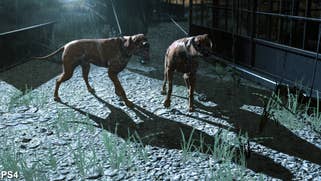
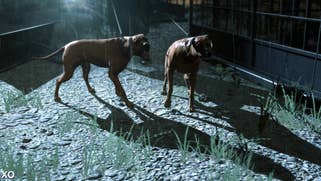


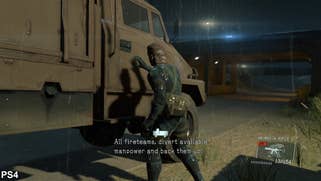
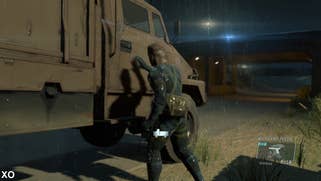
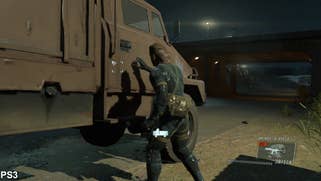
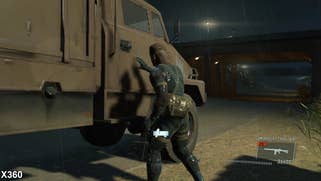
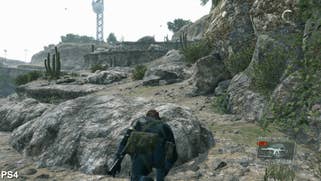
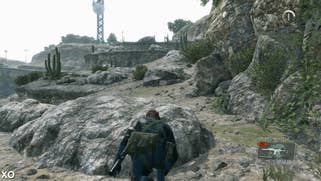

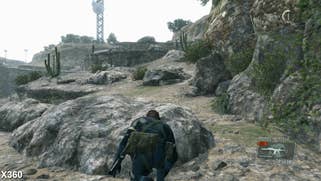
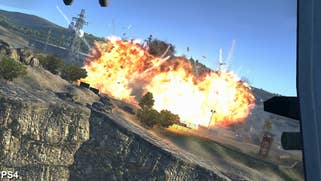
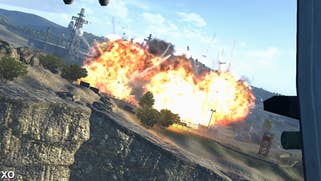
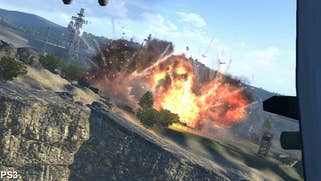
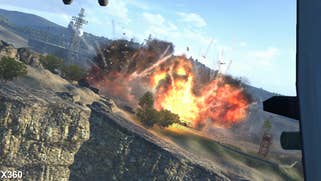


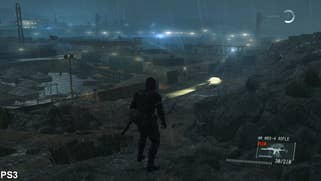
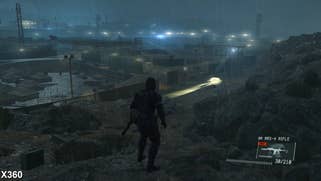
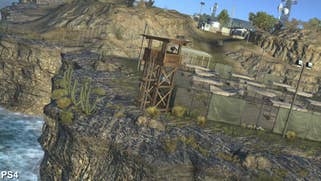

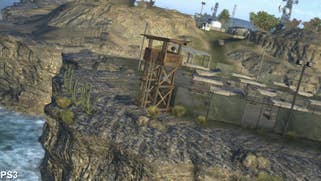
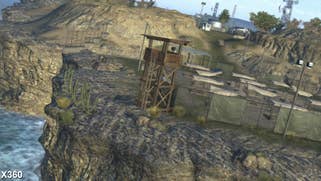
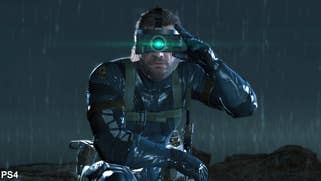
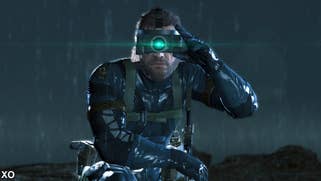

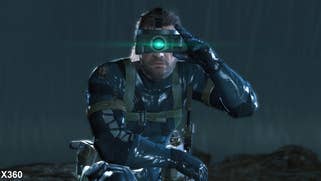
When it comes to the PS4 and Xbox One advantage however, a difference in lighting is certainly present. Rendered light sources are greater in number from a distance, and a spotlight's spread plays out more intensively across the environment - creating a brighter look on last-gen. We're treated to a perfect example of this during the opening shot, where anisotropic lens flare effects go missing on distant lights for PS3 and 360 - that is, until you draw Snake closer.
Shadows are a sticking point too; the same on newer platforms, but implemented in unique ways for the older generation. In the 360's case we have dynamically cast shadows using a low quality dither effect, while the PS3 takes a different approach entirely. With percentage closer filtering (PCF), the PS3 produces the boldest shadows of the quartet, but at the cost of aliasing artefacts that run across their outlines. Otherwise, all platforms use a dithered approach to ambient occlusion under plants and small objects, adding some much-needed depth to poorly lit areas in the game world.
Crucially, the Xbox One and PS4 releases are relieved from the pop-in. A choice addition to the Fox Engine is its ability to stream assets in the background as you make a dart through the level - lending credence to its open-world aspiration - where entering and exiting areas is possible without a single loading screen. But level-of-detail (LOD) parameters for cliff-side rocks, light sources, shadows and even plant-life are very close-field on PS3 and 360. This causes visible pop-in when Snake sprints, as higher-grade textures replace ones only meant to be viewed from a distance. It's a distraction spared from PS4 and Xbox One players of course, though it's possible to catch a glimpse of it on occasion.
"Stretches of 20fps gameplay are very possible on last-gen platforms - particularly so on PS3 when challenged by multiple guards."
Alternative analysis:
Even up-close, the new platforms simply render in more details and at a greater vantage. We have a surplus of grass, rocks and other minor extras populating the world on Xbox One and PS4 too, though again, neither adds more to the scene than the other. Comparing the PS3 and 360 versions flares up few differences though - the biggest anomaly being that dewy-wet road surfaces use a heavier reflective mapping on Sony's last-gen hardware, most noticed from a distance. It's the odd one out in this sense, even factoring in results on more capable hardware, but it's an uncommon sight.
Onto more good news; the Fox Engine is already cementing its reputation as an engine built for rock-steady performance. Not only is it designed to hit 60fps with v-sync on PS4 and Xbox One, but the overhead so high that not a single frame is dropped during our tests. What we're left with is an absolute lock on that number from start to finish, giving us a monotone 16ms reading in our frame-time analysis, ensuring an entirely consistent experience. This entitles Ground Zeroes to the fastest turn-around for a frame to appear on-screen following the player's input - a sublimely responsive game on whichever of these consoles you might own.
But what of performance on the Xbox 360 and PS3? With so much commonality between all versions, something has to give, and in this case it's - perhaps understandably - a drop to 30fps. V-sync comes included for both, but it's a disappointment to see even this lowered frame-rate target not being nailed. Stretches of 20fps gameplay are very possible here, and particularly so with the PS3 release when challenged by multiple guards around a prisoner camp. What we're left with is a far more sluggish controller response by comparison; a drop to what amounts to the biggest drawback in buying either of these releases.
"Both platform exclusive missions are roughly the same length at 20-30 minutes, and generate fun with the existing mechanics and assets."
 Metal Gear Solid: Ground Zeroes Microsoft Exclusive Mission - Xbox One vs. Xbox 360 Frame-Rate tests
Metal Gear Solid: Ground Zeroes Microsoft Exclusive Mission - Xbox One vs. Xbox 360 Frame-Rate tests
Alternative analysis:
Last but not least, there are content differences to consider between each version. This is split by console manufacturer, with an exclusive classic Snake mission appearing on PS3 and PS4 called Deja Vu. Clearly a nostalgic extra designed for longer-term series fans, you set about spotting areas in Ground Zeroes' military camp that resemble scenes from the original Metal Gear Solid. For PS4 owners meanwhile, using the iDroid menus to call in a helicopter also has messages sound aloud through Dual Shock 4's integrated speaker - though uses of its touch-pad are limited.
On the Microsoft side we have an exclusive Raiden-based mission titled Jamais Vu. This goes on a surreal, action-heavy tangent by comparison, as you take down as many body-snatchers in the same area. Both extra missions are roughly the same length at 20-30 minutes, and generate fun with the existing mechanics and assets rather than radically changing the controls to suit classic Snake or the katana-wielding Raiden. It's the same gunplay as before, but pads out the content of Ground Zeroes nicely.
Metal Gear Solid 5: Ground Zeroes - the Digital Foundry verdict
As an early example of how the Fox Engine is refreshing the Metal Gear Solid series, it's hard not to come away impressed with this Ground Zeroes prologue. The PS3 and 360 releases buckle under the weight of its new-found ambition, with general performance lurking in the 20-30fps range, but on the whole the game is still fundamentally enjoyable as an open-world action game. Visually it's tie between these two older platforms down to the smallest details, though in the end the 360 does hold at the 30fps target more convincingly when stressed - making it the recommendation in this particular head-to-head.
As for the PS4 and Xbox One releases, Kojima readily concedes that having started development on earlier platforms, the game "might look a little behind" titles created specifically for newer hardware. Even so, the generational leap brings with it boosts to texture quality, much improved accuracy to lighting and shadows, and a curtailing of the pop-in we see on the memory-limited PS3 and 360. But chief among the advantages here is a committed approach to hitting 60fps on both platforms, where performance is hitch-free during all our tests. So determined to hit this figure without a drop, in fact, extra effects such an 80s-style movie filter were seemingly dropped mid-production, having proved too much of a drain on resources - even for these newer systems.
But the king of the roost is most certainly the PS4 version, with its slick 1080p presentation marking a clear lead over the maximum 720p possible on Xbox One. The atmospheric rendering for skies is also a welcomed, if subtle extra on PS4 - the ramifications of which aren't fully fleshed out for single area demonstrated here. With no PC version in sight for the moment, this is clearly the way to brace yourself for the full Phantom Pain package due late next year.
